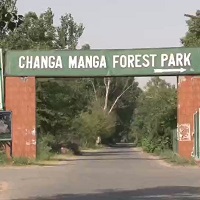Table of Contents
Changa Manga Forest Park
The man-made forest ‘Changa Manga’ is located in the Lahore and Kasur districts of Punjab province. In the past, it was the world’s largest artificial forest but in recent years, there has been extensive illegal deforestation. The forest is home to a broad range of flora and fauna.
In addition to twenty-seven species of insects, it is home to fourteen mammal species, fifty bird species, and six reptile species. Changa Manga activities that people enjoy the most include boating in Lunar lake, train rides, and watching wildlife. Currently, the forest is spread on an area of 12,000 acres.
The park is one of the few outdoor recreation spots in Pakistan. Kasur Forest Division maintains this park. As there are only a few recreational spots in the province and in areas adjacent to Lahore, a large number of people visit here for taking a break from their usual routine.
Forest resources have been utilized to create some recreation facilities like a pagoda, Changa Manga bridge, mini zoo, swimming pool, Lunar Lake, and picnic lawns. Changa Manga rest house booking is available for newly constructed four and five-bedroom rest houses.
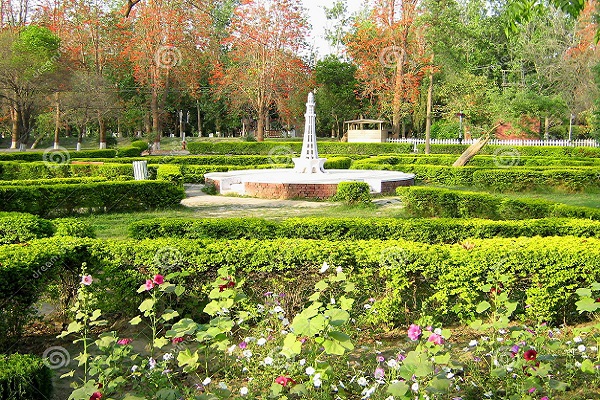
Changa Manga History
Changa Manga Politics
The Northwestern Rail system was resource-starved in 1864, which made it impossible for it to maintain services across its network. Dr. John, the 1st Conservator of Punjab Forests, suggested that every railway district should be allotted a block of land. So, the forest plantations could be grown to meet increasing demands.
On the Lahore to Karachi rail track, such land piece was granted to district Kasur. And this block of land was allotted under the presumption that a mature crop yielding 4850 ft3 per acre during a fifteen-year rotation will be sufficient to meet the daily fuel requirements of the 5-trains moving on these rail tracks, and each train will consume 36 kg (80 pounds) of fuel.
Replacement of Gondhal and Sansi Gypsies
The soil in this area was porous that simply needed water to produce crops. The Sansi and Gondhal gypsies were the main inhabitants of the area. The British brought in farmers from other provinces and older-cultivated fields to replace the Sansi and Gondhal inhabitants. The area was cleared of dry scrubs and thorn forest in order to prepare it for cultivation.
Dalbergia sissoo and Morus alba Cultivation
Berthold Ribbentrop was a German forester who served as IG (Forest) in British India. He discovered a tropical dry forest within the boundaries of allotted land where the growth of deeply rotted bar trees was feasible.
He decided to plant Dalbergia sissoo and Morus alba in this dried land. The forest plantation started in 1866, however, the first eighty-four hundred acres of wooded land did not produce a significant yield.
Adoption of Trench and Ridge Method
Charles Frederick who was serving in the Forestry Commission of India came up with the idea to use a trench & ridge method. By adopting this system, Ribbentrop made the plantation a ‘financial and sylvicultural success.’ That plantation grew to 3, 694 hectares by 1870 and the main train terminal for Tehsil Chunian on Lahore to Karachi railway track served this irrigated plantation.
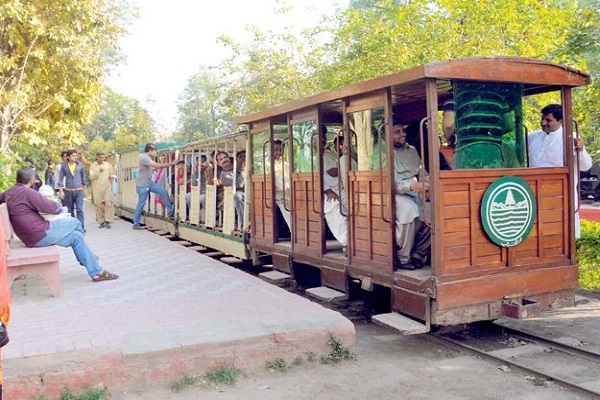
Construction of Railway Station
It was planned to construct a rail track at Changa Manga in order to improve logistics for logging activities. For narrow gauge logging activities, a 2.00 ft. gauge railway known as the ‘Changa Manga Forest Railway’ was constructed. The railway utilized wood-burning-based steam engines made by John Fowler and Co. Despite this usage, Changa Manga’s supply base expanded across the Indian timber market, keeping its wood demand steady.
A severe drought that affected most of India, especially the Peninsular Plateau, lasted from 1876 to 1878. Crop failures over the plateau were the cause of the famine. As the poor rail infrastructure was blamed for the failure to feed millions of starving people during this famine, the British government planned to expand the rail framework.
That famine also afflicted some areas of Punjab, yet there was an increased demand for firewood from Changa Manga to supply the expanding rail infrastructure.
Changa Manga Location
The forest is situated in the Kasur and Lahore districts of Punjab, Pakistan. The roadway off the N-5 Highway adjacent to Chunian and Bhai Pheru leads to this forest. Currently, the forest is spread on an area of 12,000 acres. Changa Manga weather fluctuates frequently. Sometimes it’s humid and sometimes it is rainy and cold.
Changa Manga Forest History
The largest artificial forest in the world has been heavily deforested, almost 60 percent area has been cleared of trees. Changa Manga animals including hog deer, golden jackal, mouflon, Indian peafowl, wild boar, and nilgai were also affected by this deforestation.
Revival of forest
On 11th Nov 2011, Waqas A. Khan exposed how the wood mafia is deforesting the largest man-made forest in the world with the help of forest officials. Javaid Mehboob, Chief Ombudsman, started an investigation of this case.
Khan then filed a number of news stories until 24th June 2012, when Chief Minister of Punjab Shehbaz Sharif took notice of the situation and removed Forest Conservator Rao Khalid and Forest Chief Conservator Dr. Mehboob-ur-Rehman from their posts.
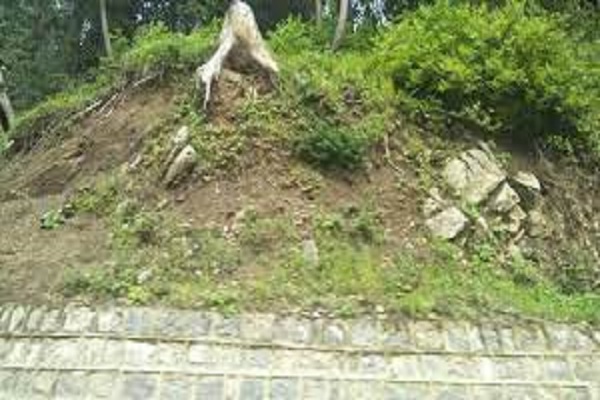
Grazing of Illegal Animals
Another factor in the destruction of the Changa Manga plantation was illegal animals. All new plants were damaged by the extensive unlawful grazing. 864 animals were removed from the forest during this time on a self-help initiative because legislation for the matter is still pending, despite the fact that the CM has already approved a summary in this regard.
Reconstruction of Boundary Wall Around Forest
The current administration maintained a connection with the Chunian Cantt administration in order to confront social and political mafias. The Chunian Cantt administration sent army patrolling squads into the forest to assist forest staff in controlling damage, and illegal grazing.
The boundary wall with iron grills was also reconstructed around the forest to protect the 5000 Rft area of the park.
Interesting facts about Changa manga forest
- The history behind the name “Changa Manga” is quite distinctive. Actually, it is based on a folktale of two brothers named Changa and Manga. As per the tale, they were robbers who sought refuge in this vast man-made forest to avoid capture by law enforcement agencies. The forest area was named after these dacoit brothers because they were a regular source of horror and continued to be quite famous among the residents even after police arrested them.
- The park is a well-known attraction for college students who study biological and environmental sciences. It is the perfect place for demonstration of extension and education activities for farmers and tourists.
- The park’s economic significance is also increased by its supplies of honey and medicinal plants.
- On 13th Feb 2014 fire caught the forest destroying about half of the forest.
- In 2014 the Government of Punjab celebrated Basant in this forest.
- In February 2017, almost 7300 seedlings were planted in a ten-acre area during a tree-plantation campaign.
Changa Manga travel guide
N-5 Highway is the best route to reach the forest from Lahore and Sahiwal and the visitors from Islamabad have to travel via the Lahore-Islamabad Motorway (M-2).
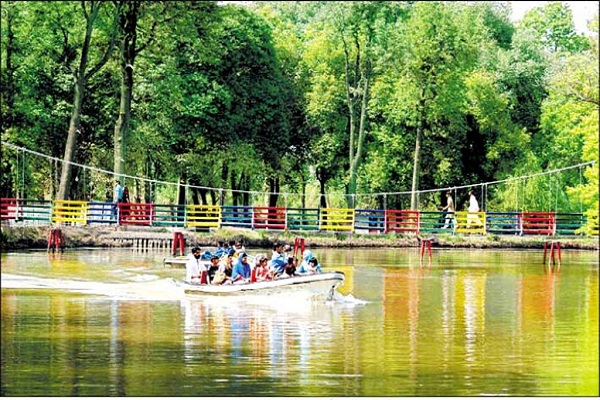
Frequently Asked Questions
What is special about Changa Manga?
The forest is home to a broad range of flora and fauna. In addition to twenty-seven species of insects, it is home to fourteen mammal species, fifty bird species, and six reptile species.
Is Changa Manga the largest man-made forest?
In the past, it was the world’s largest artificial forest but in recent years, there has been extensive illegal deforestation that resulted in a decrease in its area. Currently, the forest is spread over an area of 12,000 acres
Where is Changa Manga forest located?
The man-made forest ‘Changa Manga’ is located in the Lahore and Kasur districts of Punjab province.
Social Media Handle
https://www.facebook.com/changamangaforestpark/
